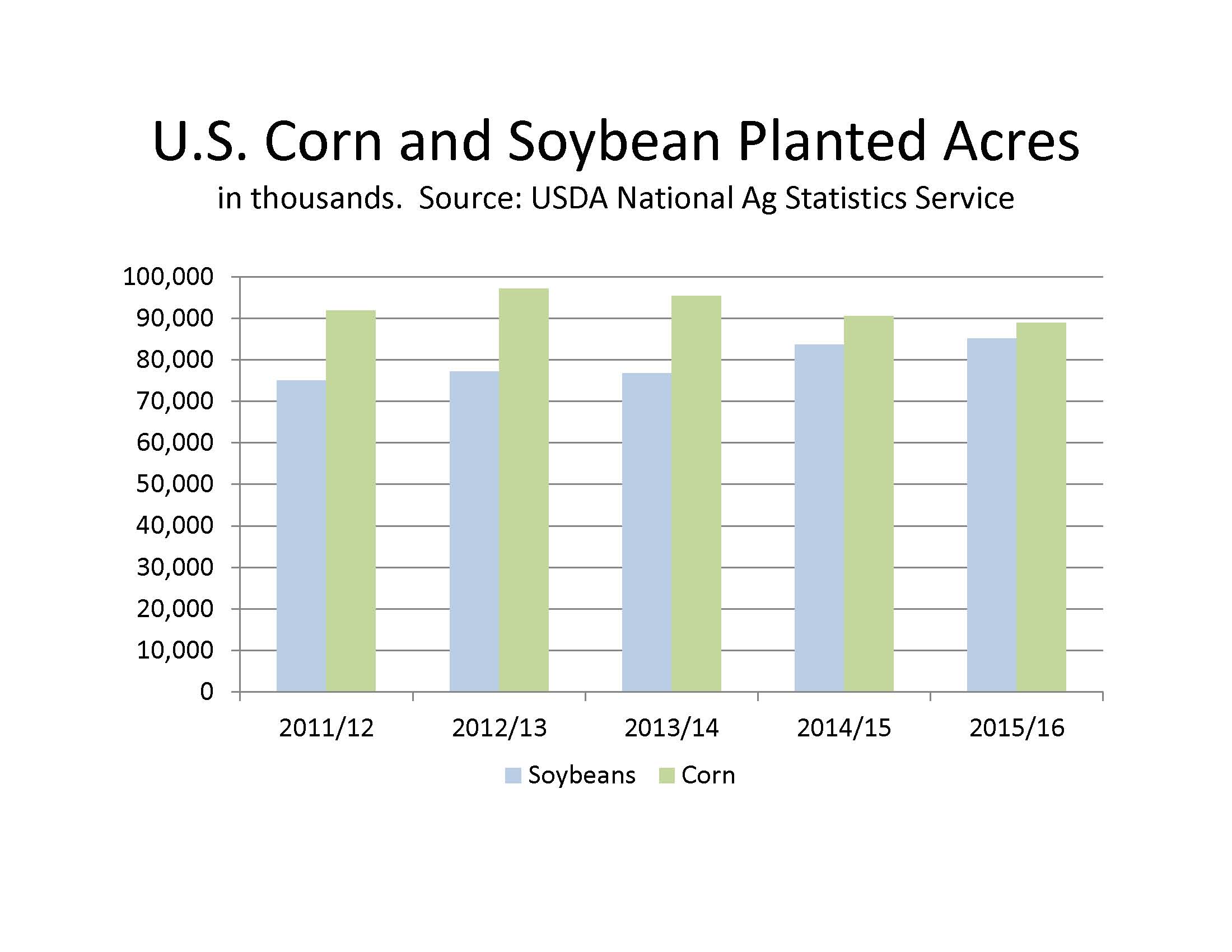U.S. Corn Belt
THE BEST AND WORST CONDITIONS
REDUCED 2015 CORN plantings and a bump up in current year exports, livestock feeding, and ethanol demand prompted the U.S. Department of Agriculture (USDA) to increase its farm gate price estimate for the 2015/16 marketing year from the $3.20 – $3.80 range to $3.45 – $4.05 per bushel of corn.

The USDA also increased its 2015/16 forecast price for soybeans from $8.25 to $9.75 per bushel to $8.50 to $10, citing lower beginning stocks and higher domestic use. But a variable crop outlook suggests farmers in eastern Corn Belt states like Illinois, Indiana, and Ohio may not achieve the yields to benefit much from stronger prices.
CROP QUALITY
Over all, the U.S. crop condition rated 69% good or excellent as of July 19 (compared to 76% last year), but conditions differed widely at the state level. Western state corn was thriving: 83% good to excellent in Iowa and 86% good to excellent in Minnesota.
Good to excellent scores were much lower in Illinois (55%), Ohio (46%), and Indiana (45%), where waterlogged fields have delayed planting and follow-up field work.
Illinois sources report more than 40% of the state’s fields are suffering from excess moisture in both the topsoil and subsoil, and more than half the soybean crop is in fair to poor condition. In Indiana, Farm Bureau president Don Villwock suggests the state’s crop losses could compare to losses from the 2012 drought. Significant condition improvements are unlikely.
CROP PROGRESS
The delays have also affected the progress of corn crops. As of July 19, silking was 10% behind the five-year average in Ohio, 12% behind in Michigan, and 15% behind in Indiana, raising the possibility of yield losses in the event of an early frost.
The picture is similar for soybeans. On average, the U.S. crop is 62% good to excellent (compared to 73% last year), but western states are scoring much better (Nebraska 72%, Iowa 77%, Minnesota 79%) and eastern states much worse (Illinois 47%, Ohio 41%, Indiana 40%).
Nationwide, planted acreage follows the pattern seen in recent years of a drop in corn acres and an increase in soybean acres. Since the high point of 97.2 million acres in 2012/13, corn plantings have dropped to 88.9 million acres this year, while soybean plantings are up from 75 million acres to 85.1 million acres – a new U.S. record for the crop (see graph). •






















